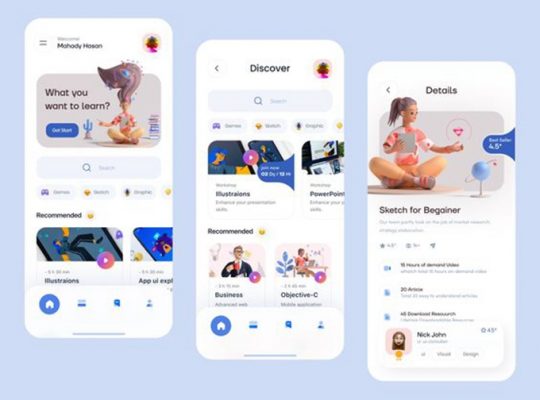Distant work, or working from house, will get a nasty rap.
But, once we have a look at the in-office statics, it doesn’t precisely put conventional office-space environments in a optimistic gentle. A majority of individuals from one survey reported that they didn’t really feel they’d a wholesome work-life steadiness.
Work—and commuting to it—is taking over extra of their time, which suggests much less time for household and buddies, leisure journey, and general private care.
The Netherlands, documented as having solely 0.5 % of staff working 50 hours every week or extra, is lapping many different nations within the race for happier employees.
As a stark distinction, the U.S. weighs in at a median of 11.4 % of People working for 50 or extra hours per week—and thereby lacking out on valuable time with their spouses, youngsters, pets, and hobbies. We really feel it’s crucial that employers across the globe make it a precedence to catch up.
Folks need to work to dwell, not dwell to work.
Our corporations have developed in some ways over the course of a decade. One of many largest adjustments, nonetheless, has been the transfer from a conventional brick-and-mortar workplace setting to a one hundred pc distant work setup. Whereas this sort of enterprise mannequin has introduced adjustments in how we perform, we’ve discovered that the advantages far outweigh any dangers.
Historical past within the Making: The Previous, Current, and Future Enterprise Panorama of Distant Work
Let’s look at the assorted levels of distant work to get an thought of the way it has modified over time, why we really feel it was inevitable, and the way we are able to predict the place it’s going subsequent.
Distant Work Historical past
Over the following few years, it’s anticipated that 50 % of all staff shall be working remotely. In actual fact, Upwork’s “Future Workforce Report” predicts that 73% of all groups can have distant employees by 2028. Know-how is permitting us to throw away what we used to think about as a work-life steadiness and, as an alternative, create concord between all points of life.
After we say “distant,” we’re speaking about versatile work environments—in different phrases, telecommuting. It’s the concept that somebody doesn’t need to journey to “go to work” each day.
Because of the expertise we now have within the digital age, folks can get their work completed with out having to report back to a selected bodily location.
Some folks have an settlement with their employer the place they will make money working from home a sure variety of hours or days out of the week, and others have a totally digital expertise. That is made potential by merely having a cellphone, the precise angle, communication abilities, and work ethic—and the right functions on a house workplace pc, in fact.
Distant Work Evolution
In at this time’s work panorama, permitting staff to work remotely not less than a part of the time is turning into greater than a luxurious—it’s an expectation.
Whereas the flexibility to work wherever and at any time when has confirmed a invaluable recruiting device in attracting new, younger expertise, it’s equally as efficient in retaining child boomers who would possibly in any other case be pressured to retire early.
Corporations who preemptively undertake a distant working mannequin previous to an emergency occasion (similar to a pure catastrophe) will stay one step forward of opponents who’re unable to do enterprise when the workplace is inaccessible. As expertise expands, companies gained’t development towards much less personalization or buyer expertise, however fairly towards retaining these parts no matter location or distance. Those that comply with this development shall be higher poised to serve the following era of purchaser wants.
Final yr, 37 % of employees telecommuted not less than a number of the time. That’s quadruple the quantity that telecommuted a decade in the past.
A powerful 99 % of these surveyed for a report by “State of Distant Work 2019” mentioned they wish to work remotely, not less than a number of the time. Relating to U.S. employees alone, the present variety of distant employees is estimated at 4.7 million—or 3.4% of the inhabitants.
The expertise conflict, or fairly, the “conflict for expertise,” is a time period that was created by Steven Hankin in 1997. A Harvard Enterprise Faculty Press ebook immortalized it in 2001. However one 2015 research of a Chinese language journey company discovered that when call-center staff had been shifted to working from house, their productiveness elevated by an common of 13%—apparently on account of a extra snug work setting and a discount in break time and sick days. It’s mentioned that the explanation corporations are having bother discovering nice folks is that they’re all trying in their very own backyards.
Why restrict your decide of candidates when you’ll be able to leverage your complete world?
Analysis reveals that workplace employees can not focus adequately at their desks. In actual fact, one research discovered that the quantity of people that say they don’t focus finest at their desks has elevated by 16 % since 2008.
Additionally startling: the variety of employees who say they don’t have entry to quiet locations to do sincerely centered work is up by a harmful 13 %.
So what can we do about this?
Let’s look to the long run and get a way of the place we’re headed if folks hold embracing these findings.
Future: What Will the Distant Workforce Be Like in 2020–2050?
The way forward for teamwork in a distributed world is an inclusive one.
Some staff are unable or unwilling to tackle a day by day workplace commute but nonetheless possess invaluable abilities and are desirous to contribute. Employers who permit for telecommuting allow seasoned employees to stay within the workforce longer.
Whereas an extended commute is probably not possible and would in any other case power them into retirement, permitting workforce members to work remotely permits employers to learn from their intensive expertise and contribute to a multigenerational workforce.
Equally, single or new mother and father could have bother juggling childcare duties with their work. By accommodating their schedules by telecommuting, they will proceed to be a invaluable useful resource to their employer whereas they have an inclination to the wants of their household.
In 2005, Thomas Friedman printed his bestselling ebook, “The World is Flat.” In his ebook, he described the technological, cultural, and financial forces that will result in an abundance of worldwide groups. Over 10 years later, we see his forecast fulfilled.
It’s straightforward to establish the large advantages of various, geographically dispersed groups working effectively collectively—wherever they could be positioned—based mostly on their abilities, efficiency, and repute.
Uhuru’s Personal “Why” Behind the Idea of Distant Work
In “Why Numerous Groups Are Smarter,” authors David Rock and Heidi Grant discovered that such groups are smarter for 3 principal causes:
- They focus extra on the details
- They course of these details extra rigorously
- They’re extra progressive
The authors discovered that working with people who find themselves completely different from you challenges your mind to beat routine or mechanical methods of pondering, which sharpens its efficiency. Our firm can even recruit from a world expertise pool that’s larger, in combination, than any geographic area.
Now, even probably the most succesful groups could also be questioning, how do language limitations, various time zones, and cultural variations not get in the way in which?
You possibly can lead effectively and successfully by making use of the ideas of enterprise empowerment to worldwide groups, which we’ll contact on later. These are solely challenges in case you permit them to be. Rock and Grant’s article provides some steering and finest practices on how managers can use a distributed workforce to their benefit.
The identical programs we use as a distributed workforce allow us to construct the operational habits required to efficiently assist shoppers everywhere in the globe.
We’ve promoted distant work in dozens of interviews and articles. Lots of people see Uhuru as a loud advocate of distant work—and we’re. However that doesn’t imply we haven’t had our moments.
Moments the place advisors inform us that we’d like an workplace as a way to entice one of the best expertise, one of the best buyers, or superb companions. Moments the place our productiveness slows to a crawl, and it looks like if we simply had everybody in the identical room, we might work this factor out. Moments the place I’ve doubted this entire distant factor, fully.
However in these moments, we re-evaluate and determine that, for my workforce, these advantages are far larger than the non permanent feeling of discouragement (you’ll need to remind your self of those, as effectively, throughout your individual “moments”):
- Value-Effectiveness of a Distant Crew
Save on workplace area, workplace provides, {hardware}, insurance coverage, warmth, air con, and extra—to not point out gasoline, practice tickets, or frustrations that include commuting (and who doesn’t like to assist the setting as an additional aspect profit?). - The Happiness of Workers
One in every of our graphic designers determined to take an prolonged journey to Switzerland and one in every of our greatest salespeople selected to briefly transfer to South Africa—just because they may. In what different job panorama can you progress to—and work from—anyplace all over the world, wherever and everytime you need (so long as you may have a secure web connection)? - High quality of Life Influences Output
It’s no secret that when staff work happier, they work extra productively. And that’s all the time good in your backside line. One research scored employees on a scale of 1 to 10. Telecommuters scored a median of 8.10, whereas conventional employees averaged solely 7.42. General, distant employees outperformed workplace employees within the areas of efficiency, teamwork, and presence.
We have now entered the brand new digital period and a few could also be a bit behind within the occasions. There are misconceptions about this newer work idea. Folks would possibly query if work is definitely being completed or if it’s an excuse to slack off and do no matter you need. In actual fact, the alternative is true. When folks work remotely, they have an inclination to get much more work completed.
There are a lot of instruments out there at this time that will help you monitor your time, similar to Toggl, Harvest, and TimeDoctor.
Remember that this isn’t to offer the sensation of micromanagement, however fairly, aid you assess how lengthy one thing ought to take you, how lengthy it’s truly taking, and learn how to plan your day in a wholesome, life like means. It can additionally assist your workforce members who’re a part of a pipeline and are ready for one thing to be handed again to them to allow them to get their work completed successfully as effectively.
And that’s simply the tip of the iceberg. There are extra ideas and methods the place these got here from. It’s time to dive a bit deeper into what precisely we’ve been doing to get to the place we’re at this time.
Extra on the “How”: What Uhuru Does to Get Unbelievable Outcomes
When roles and duties are made clear and a step-by-step workflow is known by all, any workforce can considerably amplify its potential.
Communication shall be key for any workforce—however for these professionals managing globally distributed groups, next-level communication is important. If an necessary resolution is made and phrase of it solely reaches some workforce members, those that are left in the dead of night will unknowingly veer within the unsuitable route.
You don’t need anybody feeling disregarded or going astray. This results in errors, which is unhealthy in your shoppers and workforce morale. As a part of one model, everybody must be heading in a single route, as a unit, towards the identical central targets—regardless of how far aside they’re bodily. Issues should be clear and everybody must be on the identical web page for effectivity, accuracy, and cohesiveness.
In case you’re pondering it’s inconceivable to make sure that occurs when the workforce isn’t in the identical workplace, unable to easily knock on a door or swing by a cubicle to ask a query, assume once more. Distant work might need been tougher again within the day, however lately, it has turn into nearly second nature for thus many due to technological development.
Using Know-how to Help Distant Groups
The best coaching and expertise can be sure that offsite employees don’t really feel disregarded. We centered on constructing an agile enterprise by digitally distributed programs. Like many different profitable distant groups, Uhuru communicates throughout completely different time zones (eight in the mean time) with out actually feeling the space. Maintain studying to see how that is made potential by the precise expertise.
We make sure that to place tried and true instruments to the check each day to see what works finest for our groups and what doesn’t. By way of trial and error, we’ve been in a position to slender down our favourite apps that assist us get the job completed, which we share later on this article.
Once more, distant work has its benefits—flexibility, low or no overhead prices, and a larger pipeline of candidates from which to rent. However it additionally has its drawbacks—much less face-to-face interplay, concern about whether or not staff are staying on activity, and generally, communication challenges. As a result of dispersed staff may fit in numerous cities, states, nations, and time zones, they rely closely on expertise to attach and collaborate with one another and with shoppers.
So how does Uhuru deal with profitable day by day operations with out an workplace? Listed here are a few of our ideas and effectively as ones from different supervisors and office specialists who’re getting nice outcomes from their distant groups:
Begin Robust
Earlier than his software program firm’s workforce turned one hundred pc distant, Alex Turnbull, founder and CEO of GrooveHQ, described an workplace the place employees had been there however not all the time “current.” Whereas folks typically labored effectively collectively after they completely wanted to, many had been tuning out their setting with headphones whereas tackling their day-to-day duties. Turnbull didn’t see why they wanted to be in the identical room on a regular basis in the event that they weren’t benefiting from being collectively in the identical bodily area anyway.
Relinquishing a bodily company workplace eradicated expensive actual property bills, improved work-life steadiness, and expanded the corporate’s capability to recruit high expertise extra rapidly than ever earlier than. However tradition suffered till the employees found out methods to keep up a way of neighborhood by digital, and even rare in-person, conferences.
As a method to seek out one of the best distant staff, some corporations deploy the identical sort of expertise employees shall be utilizing on the job through the hiring course of. As an illustration, conducting digital interviews may give employers perception into how the candidate approaches distant work since that’s the same setup they are going to expertise on the job, if employed. From our company hiring experiences and our current launch of expertise company centered on serving to corporations discover the best high quality full-time distant Entrepreneurs, we’ve realized; it’s necessary to grasp why they [the company or candidate] work remotely and the way they work.
Create a Properly-Designed Onboarding Course of
Specialists say onboarding is an efficient strategy to familiarize new staff with the folks, processes, and instruments—similar to video expertise and collaboration platforms—that they might want to succeed.
For instance, some organizations use conferencing instruments to offer new staff an opportunity to fulfill coworkers forward of time. A digital tour of workspaces is a pleasant contact if the corporate nonetheless has some in-office, non-remote employees or the job requires you to be there not less than a part of the time.
A great deal of coaching within the type of how-to demos may also be completed by video to catch new folks on top of things rapidly in an attractive, personalised means. Create classes for them to see how your processes and instruments work and get them conversant in sure nuances with out having to be there in particular person.
Maintain the Strains of Communication Open
Kevin Eikenberry, founding father of The Kevin Eikenberry Group and co-founder of the Distant Management Institute in Indianapolis, says, “from the ever present e-mail to learn how to have conferences, all the pieces is mediated by expertise.” That’s why he asks new digital workforce members to provoke 15- to 30-minute get-to-know-you cellphone conversations with every current workforce member. The calls foster collaboration and belief, but additionally take a number of the strain off the supervisor to be the only contact particular person.
At our corporations, apart from these invaluable private calls, every workforce is inspired to share current accomplishments, subsequent steps, points, and dangers whereas on work-related day by day, weekly, and month-to-month convention calls. Throughout these obligatory calls, we briefly evaluation every workforce’s standing, leaving sufficient time to dive into any space that want clarification for any member. The conversations have all the time resulted in participating dialogue as a result of completely different people provide other ways of pondering and completely different views. If we didn’t have these check-in classes, one thing necessary could have been missed.








